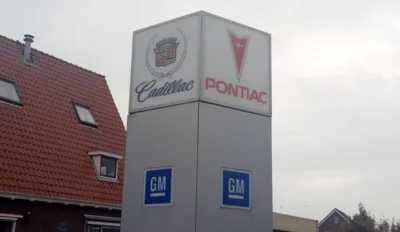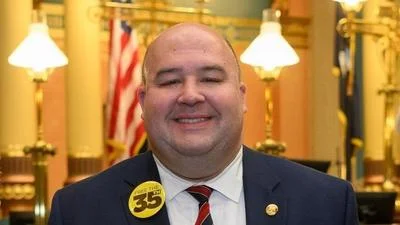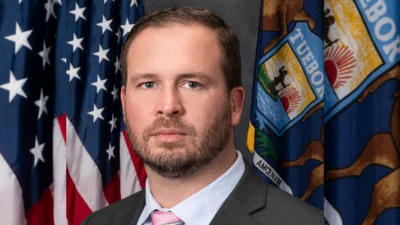City of Dearborn Heights issued the following announcement on Nov 15.
Overview
Public Assistance (PA) is FEMA’s largest grant program providing funds to assist communities responding to and recovering from major disasters or emergencies declared by the President. The program provides funding for emergency assistance to save lives and protect property, and assists with funding for permanently restoring community infrastructure affected by a federally declared incident.
Eligible Applicants
Eligible applicants include states, federally recognized tribal governments (including Alaska Native villages and organizations so long as they are not privately owned), U.S. territories, local governments, and certain private non-profit (PNP) organizations.
PNPs must have “an effective ruling letter from the U.S. Internal Revenue Service, granting tax exemption under sections 501(c), (d), or (e) of the Internal Revenue Code of 1954, or satisfactory evidence from the State that the nonrevenue producing organization or entity is a nonprofit one organized or doing business under State law.”1 Additionally, for a PNP operated facility to be eligible, the PNP must demonstrate the facility provides a critical service or provides a non-critical, but essential government service and is open to the general public. A facility that provides a critical service is defined as one used for an educational, utility, emergency, or medical purpose.
Project Categories
FEMA processes PA grant funding according to the type of work the applicant undertakes. Eligible work must be required as a result of the declared incident, be located in the designated area, be the legal responsibility of the applicant, and be undertaken at a reasonable cost.
Eligible work is classified into the following categories:
Emergency Work
Category A: Debris removal
Category B: Emergency protective measures
Permanent Work
Category C: Roads and bridges
Category D: Water control facilities
Category E: Public buildings and contents
Category F: Public utilities
Category G: Parks, recreational, and other facilities
Federal funding guidelines for each of these categories are listed in the Public Assistance Program and Policy Guide, which is located online at fema.gov/public-assistance-policy-and-guidance.
Application Process
After a federal declaration, the recipient (i.e. state, tribe, or territory) conducts Applicant Briefings to inform potential applicants (i.e. state, local, tribal, territorial, and PNP officials) of the assistance available and how to apply. Applicants must then file a Request for Public Assistance within 30 days of the date their respective area is designated by the federal declaration.
Following the approved request, FEMA and the applicants will conduct additional meetings to discuss disaster damage and project formulation. Applicants must identify and report damages to FEMA within the 60-day regulatory timeframe. FEMA, the recipient, or the applicant will then prepare project worksheets for eligible work and eligible facilities based on actual or estimated project costs.
Grant Administration
The federal share of assistance will not be less than 75 percent of the eligible cost for emergency measures and permanent restoration. The recipient determines how the non-federal share of 25 percent will be dispersed to its applicants. Recipients are responsible for managing the funds obligated to them by FEMA, including disbursement to applicants. FEMA will continue to monitor the recovery progress to ensure the timely delivery of eligible assistance, and compliance with federal laws and regulations.
Large Projects
Projects above a certain amount are considered “large.” The threshold corresponds to the annually adjusted small project maximum. Alternative Procedures (428): For large permanent work projects using Section 428 PA Alternative Procedures, funding is made on the basis of a fixed-cost estimate agreed upon by the applicant, recipient and FEMA. PA funding is based on the estimated amount to restore the damaged facility to its pre-disaster design and function, including applicable and federally required codes and standards, and any identified eligible hazard mitigation measures. Once agreement on the fixed amount is made, the funding will not be adjusted. Applicants have the flexibility to use the funding to meet the post-disaster recovery needs, and not just build back what they had before. The applicant may also retain any excess funds for use on certain eligible activities. Standard Procedures (406): For large permanent work projects using the standard Section 406 process, funding is provided on the basis of actual costs as determined after the project is completed. The applicant’s flexibility in use of the funding is limited, and they do not have the ability to retain excess funds.
Small Projects
Projects falling below a certain threshold are considered "small." The threshold is adjusted annually for inflation. For Fiscal Year 2022, that threshold is $139,800. For small projects, final funding is based on the estimate at the time of project approval and certification of project completion is required when the project is done. The minimum amount that can be approved for any Project Worksheet under the PA Program for FY 2022 is $3,500.
State of Michigan
Federal Disaster Declaration Fact Sheet
November 10, 2021
On July 15, 2021, President Joseph R. Biden Jr. granted a Major Disaster Declaration for the State of Michigan triggering the release of Federal funds to help individuals and communities recover from Severe Storms, Flooding, and Tornadoes that occurred June 25-26, 2021. This disaster declaration has been amended as indicated below in bold. Details of the disaster declaration and assistance programs are as follows:
Declaration Number: FEMA-4607-DR
Incident: Severe Storms, Flooding, and Tornadoes
Incident Period: June 25-26, 2021
Federal Coordinating Officer: Scott A. Burgess
National FCO Program
Individual Assistance (IA): (Assistance to individuals and households):
IA-Designated Counties: Macomb, Oakland, Washtenaw and Wayne Counties.
Public Assistance (PA): (Assistance for emergency work and the repair or replacement of disaster-damaged facilities):
PA-Designated Counties: Ionia and Wayne Counties.
Hazard Mitigation (HM): (Assistance for actions taken to prevent or reduce long term risk to life and property from natural hazards):
HM-Designated Areas: All areas in the State of Michigan are eligible for assistance under the Hazard Mitigation Grant Program.
OTHER: Additional designations may be made at a later date if requested by the State and warranted by the results of further assessments.
Individuals in Macomb, Oakland, Washtenaw and Wayne Counties can apply with FEMA the following ways:
- Apply online at www.DisasterAssistance.gov.
- Constituents may call the application phone number at 1-800-621-3362 (TTY: 800-462-7585).






 Alerts Sign-up
Alerts Sign-up